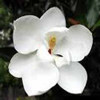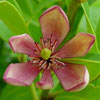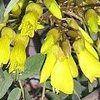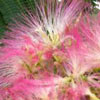Trees for sale in New Zealand
Big Trees, small trees, sitting in the shade trees, blossom trees, weeping trees, native trees, fruit trees, nut trees and trees that just simply please. Here at Wairere Nursery we make buying trees a breeze, we've got a fantastic selection to choose from whether you are looking for deciduous or evergreen, large or small. We have the knowledge to help you buy the right tree for the right place. So if you're looking to grow a handsome Oak, a magnificent Magnolia, a beautiful Flowering Cherry or an exquisite weeping Maple we pride ourselves in the range we have on offer. Take the time to browse our secure web-site and if you wish your selection can be carefully packaged and freighted direct to your door anywhere in New Zealand. If you prefer pop along to our nursery at 826 Gordonton Road, Hamilton and talk to Harry and Lloyd about the right trees for your garden. And remember "The best time to plant a tree was 20 years ago.The next best time is now". - Chinese Proverb
Among the conifers are some of the smallest, largest and oldest living woody plants known. The more than 500 conifer species are distributed worldwide and are invaluable for their timber as well as their adaptability as garden plants for year-round interest.
The diversity of available conifers for the landscape is tremendous.
Nurseries and plants people are devoted to the discovery and introduction of new selections that vary in size, form, color and texture. There has been special interest in the group of conifers classified as "dwarf conifers." One definition of a dwarf conifer is one that fails to attain the size and stature of the parent plant. These smaller growing varieties are invaluable in the smaller space garden designs.
The form most commonly associated with conifers is the familiar conical shape of Christmas trees; yet, for the landscape, the range varies from the vertical form of tall columnar plants, globose or rounded forms, spreading forms and the horizontal forms of flat ground covers.
Garden conifers come in a rainbow of year-round colours that can be used effectively in creating colour schemes with other plants. Many are shades of green, yellow, orange, blue, lavender, grey or purple, while others are bicolor and have variegated foliage.
Many go through seasonal color changes and provide interest in the winter landscape. In the spring, lighter shades of new growth contrast against the darker older foliage. In some cases, new growth emerges not just as a lighter shade but as a bright yellow or red, rivaling any floral display. Some even display two colors of needles. On other conifers, the cones and seed-bearing fruits are brightly colored and decorative during certain seasons of the year.
The landscape uses are limited only by the imagination. The strong silhouettes of many compact, slow-growing conifers can accent a corner of a garden bed, frame a doorway or add winter interest to perennial and annual flower beds.
Use conifers in foundation plantings, borders or island beds with other shrubs. Plant a mixture of different conifers, blending the various textures, shapes and colors, for a unique low-maintenance landscape.
Use large specimens amid expansive lawns and miniature specimens to view up close in containers, troughs or rock gardens. Don't forget that conifers are also stalwart hedging and windbreak plants.
The natural growth pattern of a normal or dwarf evergreen is a large part of its charm. Some evergreens can be severely pruned while others will respond to light pruning.
These days a strong influence on the development of the genus comes not from France, Asia or America but New Zealand. The Jury family from Taranaki and Oswald Blumhardt from Northland have raised many highly desirable hybrids and introduced them to the world. If you want to plant a New Zealand bred deciduous Magnolia look for such delights as "Athene", "Atlas", "Iolanthe", "Vulcan" and "Star Wars" to name just a few.
Once you have chosen a Magnolia or 3 then this is one tree that must have the correct planting position. This is important for many reasons, not the least being that they resent being moved. The trees do not have a tap root but their fibrous roots are sensitive to disturbance. Do your best to choose a sunny position away from strong cold winds. Magnolias can tolerate frost, however a late frost in spring could damage the emerging flower buds.
The soil must be free draining and if possible rich with organic matter. If your soil is poor, add some compost, rotted leaf mould or peat and mix in well. As with many trees with fibrous roots, Magnolias don';;;;;t like their surface roots getting too hot so they will thank you for a nice layer of mulch aplied just before summer. They are acid lovers, so a side dressing of acid fertilizer aplied in early spring will also keep them hapy. You can buy especially formulated acid fertilizer from any good garden centre. Never aply lime. Water well during dry periods.
Magnolias need space to grow to really show off their beauty so consider this when planting. Little pruning should be required other than to maintain a nice shape.
Now sit back and wait for spring when the bare branches of deciduous Magnolias will be covered with beautiful large goblets with a tantalizing perfume. The colour choice ranges from crisp white, softest to deepest pink, ruby red, wine red and warm yellow.
Evergreen Magnolias have large scented cream flowers that apear in summer and autumn. In contrast to the above they are far more tolerant of wind and can cope with more moisture in the soil. Whilst I adore the deciduous Magnolias I respect the evergreen cultivars and would not be without them in the garden. The large dark green glossy foliage with tactile russet under-felt always looks good. Top that off with beautiful waxy cream flowers with a fresh fruity fragrance and you have a very handsome specimen tree. Definitely on my top 10 list.
Magnolias should not be overlooked in any planting scheme; I certainly would not consider creating a garden without them.
Words used to describe this close cousin of the Magnolia are "best ever flowering tree", "lots of bang behind the bloom" and "top performer, under-rated".
Some members of the Michelia family such as Michelia Figo (Port Wine Magnolia) are a little shy showing off their assets and therefore can be overlooked by the gardener - this would be a mistake. The flowers may be a little hidden by the foliage but when you go out into the garden in early evening the delightful fragrance will definitely lead you by the nose.
Michelias offer glossy evergreen foliage that doesn't mind being clipped into whatever shape you like, quantity of blooms to rival many garden plants, intense fragrance and a neat and tidy habit. Michelias can be used for topiary and hedging and they grow very happily in a container.
The ideal conditions for a happy healthy plant are rich, well drained soil, morning sun to part shade and a nice blanket of mulch around the roots in summer. Michelia Figo doesn't like heavy frosts when young. In saying all that, my experience is that they are tolerant and adaptable plants and will thrive without too much fuss and attention though they won';t thank you if they dry out during summer. They are seldom attacked by pests or diseases. Michelias take 2-3 years to reach their full potential and after that you will be amazed at the quantity of flowers and growth.
Recent introductions from China are proving to do well in New Zealand conditions. Look for Michelia Yunnanensis (originates from the Yunnan province in China) and Michelia Maudiae. Both have delightful furry brown buds that open to small creamy white flowers with a wonderful fragrance reminiscent of Freesias. Michelia Bubbles and Mixed Up Miss (bred in NZ) have larger foliage and flowers than other Michelias and are well worth considering as a small specimen tree.
Talk to us about the best Michelia for your garden and we "nose" you won't be disappointed with the performance of these lovely evergreen shrubs and trees.
Check out our other pages -
Roses for Sale in New Zealand
Camellias for Sale in New Zealand NZ
Fruit Trees for sale in New Zealand
Perrenials for sale in New Zealand
Trees for sale in New Zealand
Plants for sale in New Zealand
Plants for sale Online in New Zealand
Topiary Plants for sale in New Zealand
Plants for sale in New Zealand
Nurseries in Hamilton New Zealand
Hedging Plants for Sale in New Zealand
Hamilton Garden Centres New Zealand
Hamilton Landscaping New Zealand
Native Trees For Sale in New Zealand
Mail Order Plants New Zealand
Mail Order Roses New Zealand
Mail Order Rose Bushes New Zealand
Mail Order Nurseries in New Zealand
Roses for Sale in New Zealand
Roses for Sale in New Zealand




